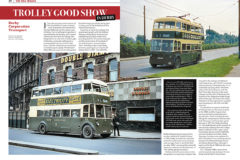Royal Navy Austin K2/Y restored
Posted by Chris Graham on 29th March 2020
This 1943 Royal Navy Austin K2/Y ambulance has spent far more of its life ferrying farm workers and produce around, than transporting injured military personnel, as Richard Gunn explains.

This Royal Navy Austin K2/Y is believed to be one of just two examples that survive in Royal Navy blue livery though, like the rest, it was out-shopped from Longbridge in Olive Drab.
This World War Two Austin owes its remarkable survival to the fact that, for much of its life, it was used as a commercial vehicle. Following the war, it spent well over 40 years as a farm hack around East Anglia. This use meant it survived long enough for its historical importance to be recognised by Chris Carter, its current owner and grandson of the farmer who had acquired it. He lovingly returned it to Naval ambulance spec for the 50th anniversary of D-Day. Yet it still lives on the Lincolnshire family farm where it once led a somewhat more rough-and-tumble existence.
Austin’s K2/Y ambulance was born out of the civilian K30 truck. Constructed as part of Longbridge’s extensive war effort, this particular one appeared in 1943, as one of the 13,102 examples manufactured between 1940 and 1945, featuring a rear canvas body collaboratively developed by the Royal Army Medical Corps and coachbuilder, Mann Egerton. While Bedford (ML 54) and Morris Commercial (CS11/30F) variants were also produced, Austins were by far the most prevalent, with the type earning the nickname ‘Katy’.
Portsmouth-bound
This one went to the Royal Navy’s dockyards in Portsmouth, although Chris admits that its wartime story is a little vague. “Someone said to me, and this is just hearsay, that having only one red cross across both back doors means it stayed in the UK. Those that went across the France apparently had a red cross on each door. Proper front doors – instead of the more usual canvas closures – also back up this theory.
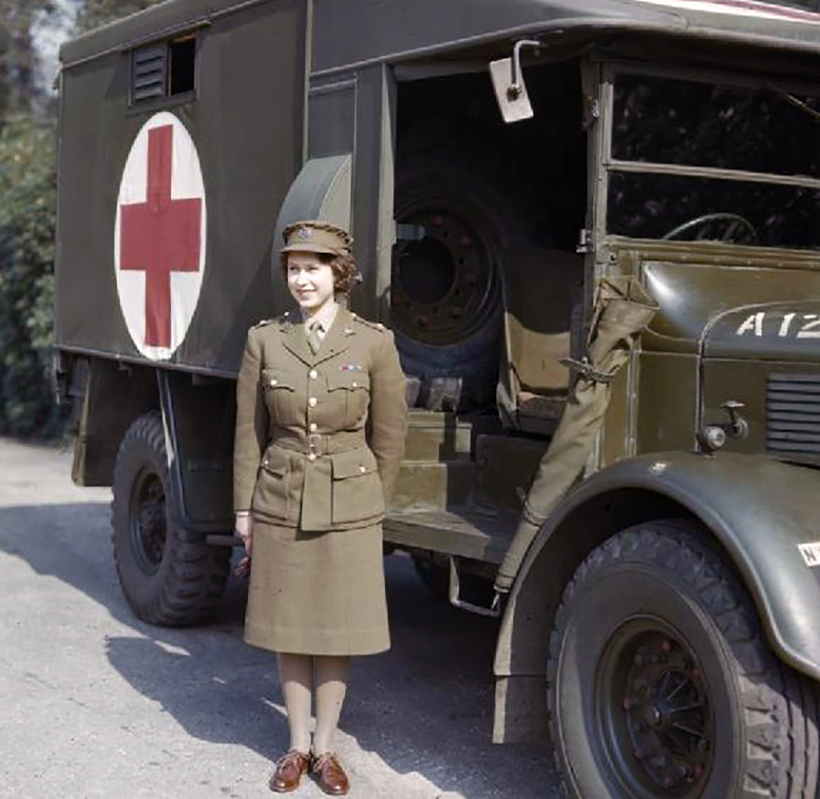
The future Queen maintained and drove Austin K2/Ys while in the Auxiliary Territorial Service, during World War Two.
The K2/Y has become one of the better-known British wartime vehicles, thanks to a certain young Elizabeth Windsor both maintaining and driving examples. But what made the model even more memorable was the 1958 movie, Ice Cold in Alex. This featured a K2/Y struggling through the Sahara from Tobruk to Alexandria, in the company of lager-loving John Mills, Anthony Quayle, Sylvia Syms and Harry Andrews, and cemented the perception of these Austins as tough, go anywhere machines. That said, the film used both a standard, rear-wheel-drive version and a specially-converted four-wheel-drive one, with the front axle from a Canadian Military truck along with transfer box and propshafts.
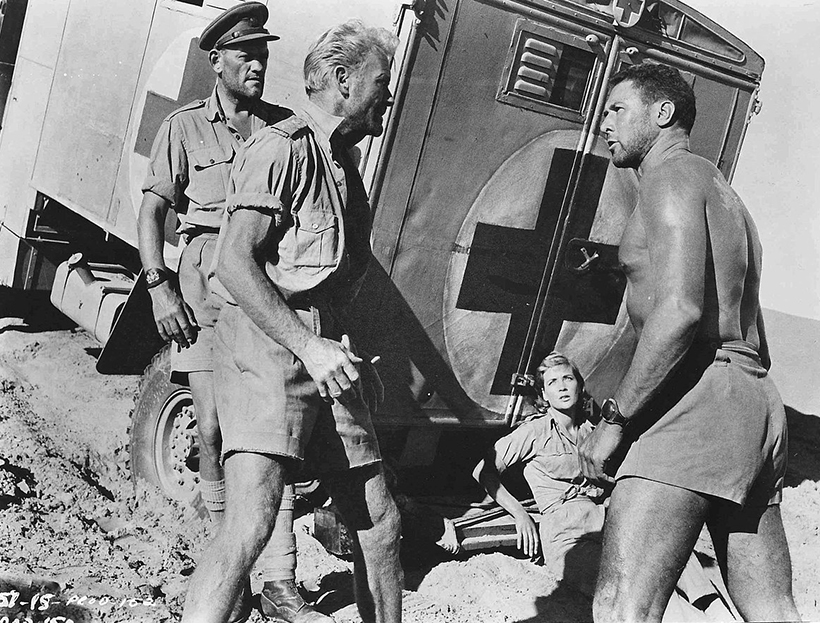
The Austin K2/Y ambulance was made famous by the 1958 movie Ice Cold in Alex. The film featured a specially-converted 4×4 example.
Chris’ K2/Y would have been outs-hopped by Austin in Army Olive Drab, then repainted Navy Blue before going into service. “I get a lot of people telling me it’s the wrong colour,” says Chris as, of the 50 or so K2/Ys remaining, just two are in Naval colours, including his. “People are partially correct, because they were all originally green. But the Royal Navy paints everything blue, and if you dig about under the wooden floorboards in the cab, you’ll still find some Olive Drab. It’s also come through on the original canvas sides.”
The Austin’s military career lasted just five years, before it was packed off to Nottinghamshire for disposal in a 1948 general collective sale. There, Chris’ grandfather acquired it to use on his East Anglian farm. “These were big utility vehicles, and many farmers bought them,” explains Chris. “But in those pre-Land Rover days, many then chopped the canvas sides off to make a pick-up truck, because something to carry your produce around in just wasn’t available. Thank goodness that didn’t happen to this one.”
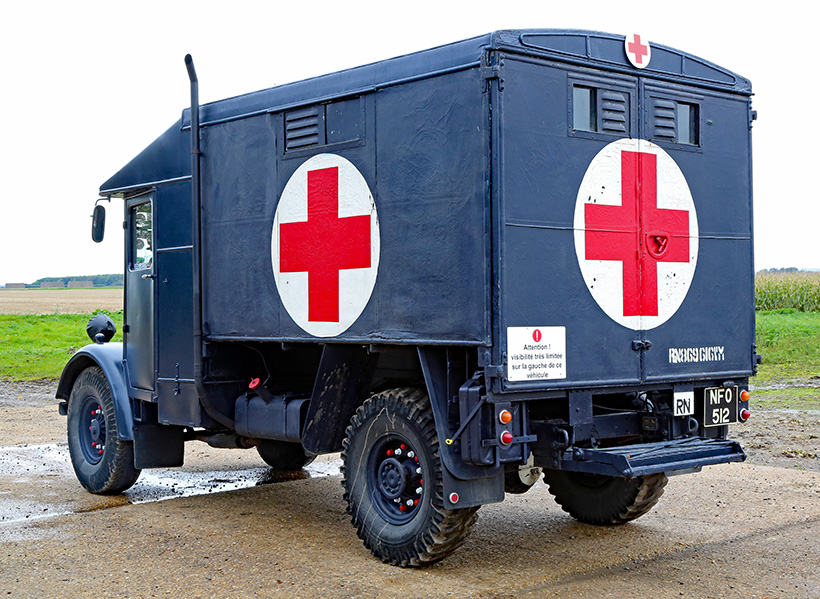
Chris believes that the single red cross on the rear doors was used for RN ambulances that stayed in this country during the war. Those that went abroad had one smaller one on each panel.
The purchase price was £150, along with various other bits of redundant wartime equipment. “I remember aircraft matting being one of the items, which came in very useful as fencing. These sales were huge. It was a sort of ‘how many Jeeps do you want for £50?’ situation.” No doubt the Austin proved handy for getting it all back.
Domestic duties
Home on the farm, the Austin’s job was transporting men and materials around. The wisdom of keeping its rear body intact paid off as it was also used for shooting parties. “We used to regularly get 12 men inside” recalls Chris. Granted this was somewhat less than one K2/Y’s wartime reputed achievement, when it managed to carry 27 wounded soldiers to safety during the North African campaign.
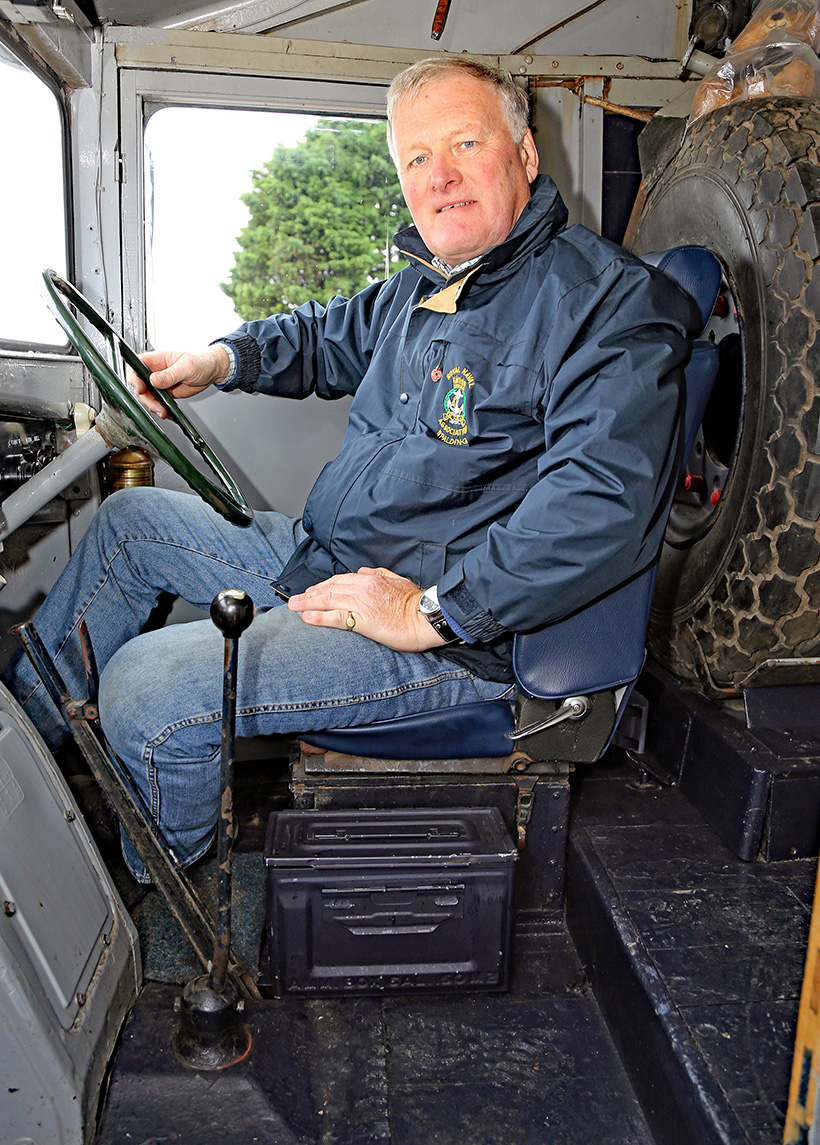
The Austin has been a member of the Carter family for longer than Chris has been alive. He became its owner in 1992.
The ex-ambulance wasn’t solely used around the farm confines. It also strayed out on to public roads, for local deliveries and duties (although around 200 miles per annum was its usual mileage tally). Thus, when the MoT test was introduced in 1960, it sprouted headlamps and indicators, while the farm’s mechanics kept it serviced and healthy. It was also kept looking tidy in what Chris describes as “a sort of Massey-Ferguson grey” before graduating to the farm’s own livery of dark green with a gold stripe and blue patches. This protected it, but also disguised its military origins. To the casual observer, it was just an ordinary, ageing truck.
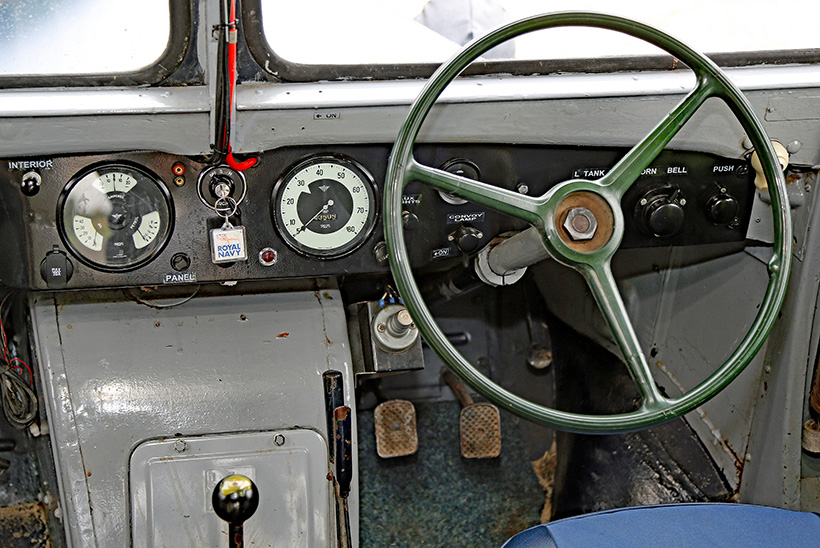
While the cabin interior has been updated in places, it’s still very much as it was in the 1940s.
After Chris’ grandfather died, the K2/Y found itself side-lined. Chris’ father talked of selling it, but Chris had grown rather attached to the old Austin which had been part of the family for over 40 years. “So the upshot was that I bought it, for the same price that had been paid in the WD sale, £150. That was in 1992.”
With the 50th anniversary of D-Day only two years away, Chris hatched a plan to return it to original condition, and drive it over to France for the commemorative events. His decision was made somewhat easier because, as well as farming, he’d also started a small classic vehicle restoration workshop. Thus, the K2/Y was in good hands, although it had survived remarkably well; all it really needed was some minor bodywork, new back mudguards and a repaint, complete with red crosses.
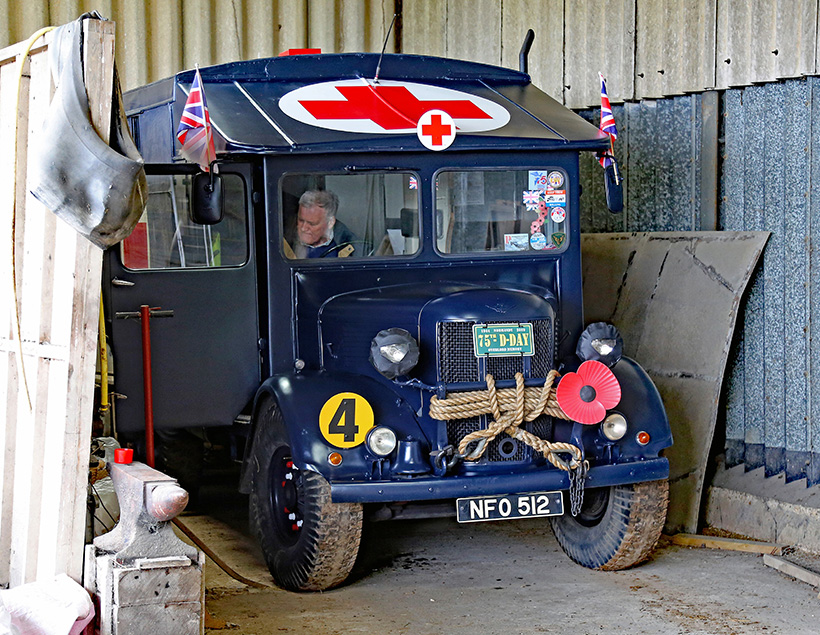
The Austin still lives on the farm, where it spent a substantial amount of its post-war working life.
“The crosses were starting to show through the newer paint anyway, which provided a handy outline for us.” Only the canvas roof was replaced on the rear load area – twice, as it happens, since the original fitment didn’t go well. The sides are still the ones it left Longbridge with, 72 years ago. “It’s been repainted two or three times, but never fully restored. And I’m glad it hasn’t been. It is what it is – with blemishes.”
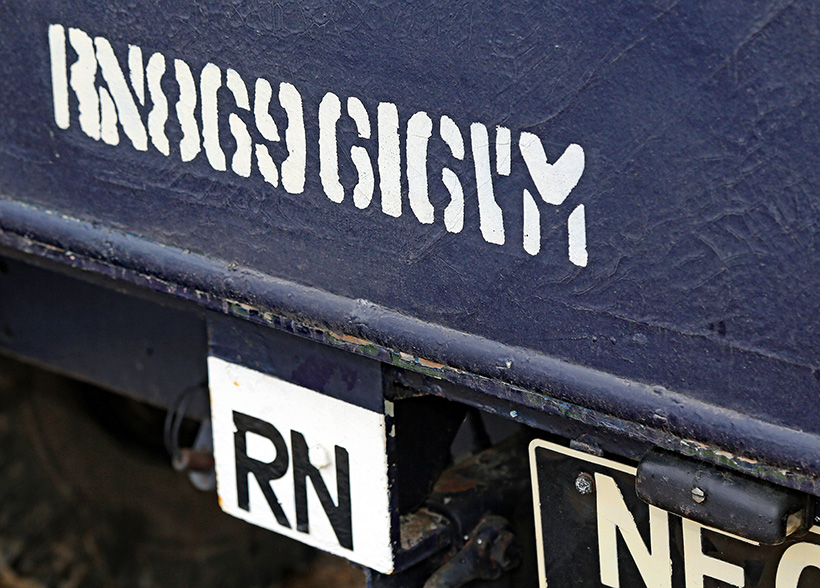
This Royal Navy identification number – RN/869616/VM – was found underneath one of the bonnet doors. It’s not been touched since the 1940s.
Mechanical checks
While, mechanically, everything seemed in reasonable order, Chris still went through the chassis, suspension, brakes and steering thoroughly, to make sure everything was up to scratch. “The 3,462cc, 60hp, six-cylinder engine needed very little attention; the head has only ever been off twice. There’s nothing complicated about these, they’re very basic. It’s blown a manifold gasket a few times, but that’s it. There’s a perpetually rattly tappet which I can’t sort out, but it’s run quite happily with it, so I’ve left it alone. I haven’t even re-shelled it.” A temperature gauge was added, although Chris’ overheating fears have never been realised.
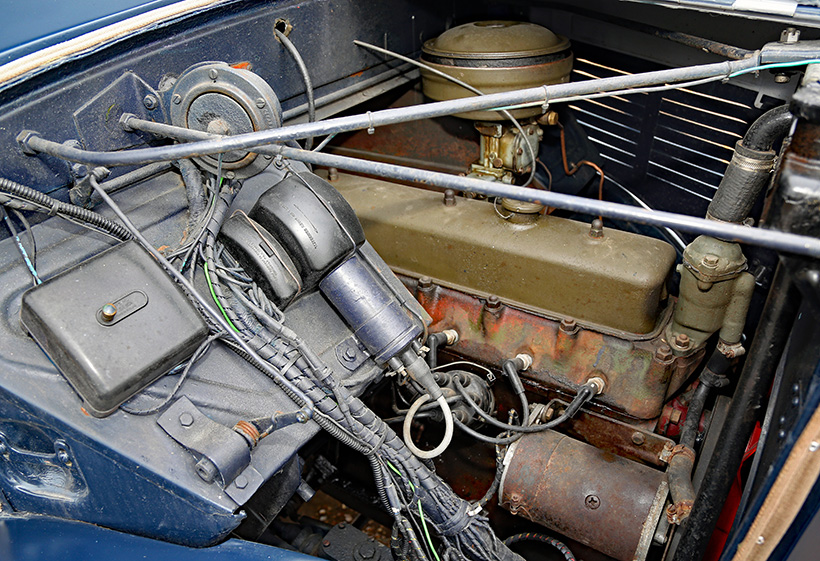
The original, 3,462cc engine has never been rebuilt and, to the best of Chris’ knowledge, the cylinder head has only been off it twice in 77 years.
There’s been one significant change in the cabin though – it now has a driver’s seat from a Triumph TR7! “The original went in for refurbishment at a local trimmers. I heard nothing for six months so I rang them to find they’d moved and, in the process, lost it. So, it’s had a TR7 seat fitted, albeit trimmed sympathetically by Brockwells Trimmers in King’s Lynn, who also did the roof. It’s not correct, but it’s a lot more comfortable.”
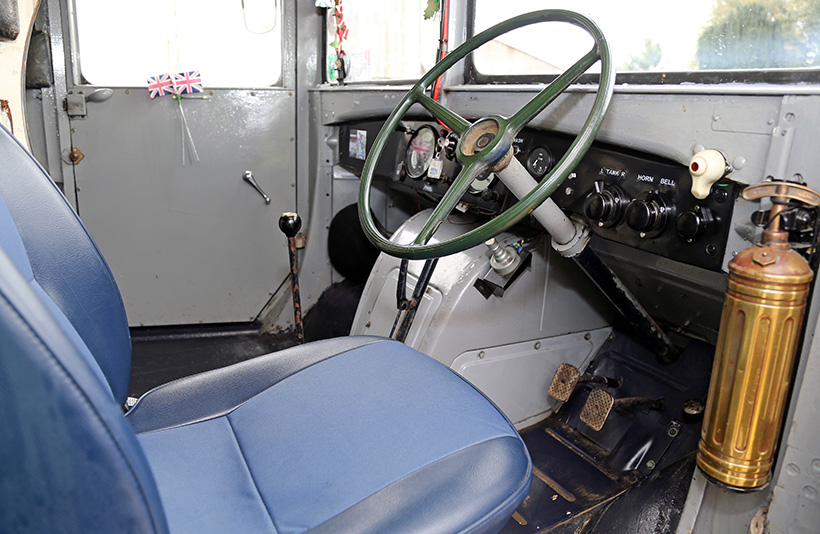
The current driver’s seat comes from a Triumph TR7, albeit sympathetically retrimmed. The original was mislaid by a trimming company, and has never been found.
This is occasionally partnered by a deckchair, after Chris’ wife didn’t exactly enjoy the first 1994 trip to Normandy, perched on the orderly’s seat atop the battery box. After one too many moments of having to cling on around corners, “we stopped for some refreshment and she found a deckchair, which just fitted perfectly,” says Chris.
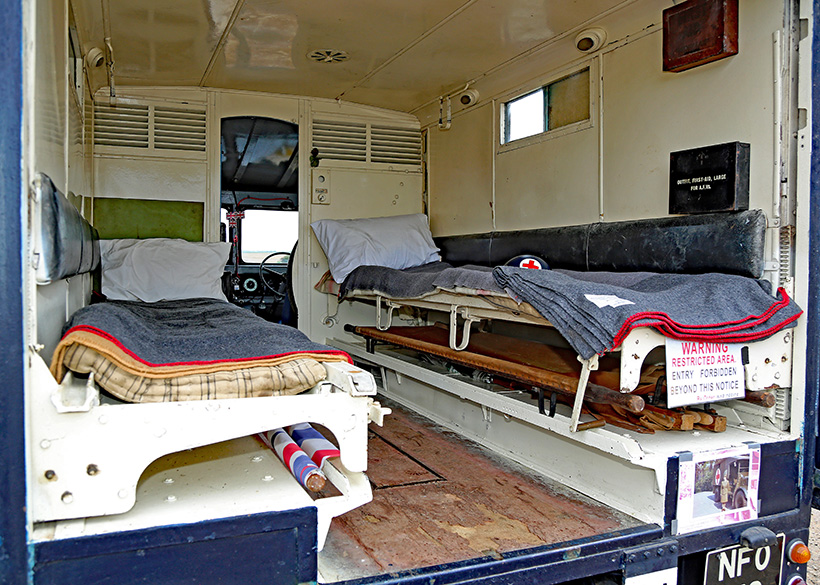
For years, the K2/Y didn’t have any stretchers. Then Chris managed to find two in one weekend, one of which came from somebody who saw the ambulance at a show.
Perhaps the biggest challenge for Chris was sourcing period equipment, such as stretchers and first aid kits, as all of that had vanished over the years. The latter items mounted in the rear had been taken out because people kept bumping their heads on them. Gradually though, Chris has managed to stock the ambulance with bits it would have had in service. A Winkworth bell was purchased from an auction site, but looked far too shiny, so was swapped for a less glitzy one that could be painted. “That went on just in time for the Sandringham Flower Show, in 2018. The Queen was there, and we had lots of fun trundling around the arena with the bell clanging.”
Ungoverned performance
Cruising speed is about 40mph, with around 45mph attainable flat-out, after Chris removed a governor on the carburettor. “This was designed to stop lead-footed squaddies from exceeding 30mph. When I realised how it worked, I also realised how to make it not work. So that’s been disabled – otherwise it’s like driving into a brick wall.” Chris now uses it quite regularly for shows and events. And it’s also been to three D-Day anniversaries in Normandy, initially in 1994, with more recent visits during 2014 and 2019.
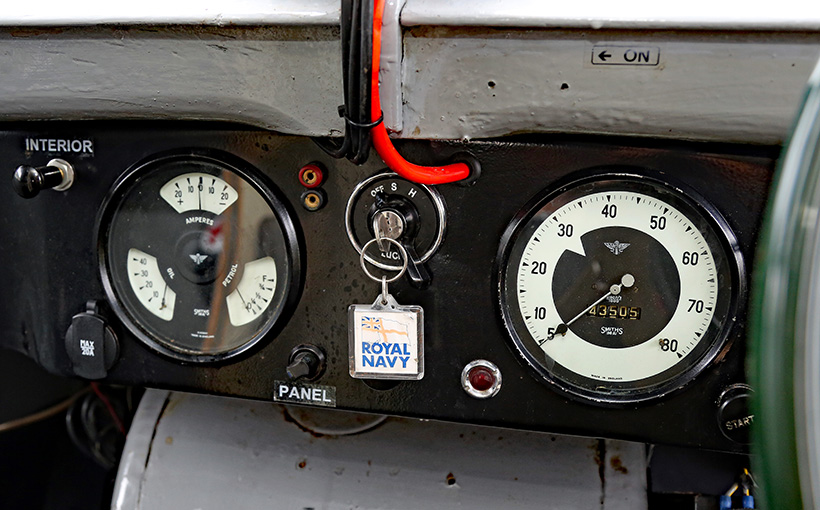
During its 77-year life, the Austin has covered just 43,505 miles. The arrow marking 30mph on the speedometer indicates the ‘desirable’ maximum speed.
Thinking back to that inaugural trip, Chris says: “It took five hours to get to Portsmouth, a journey that takes three by car. We were the talk of the town around the M25, I’m sure. It’s a long way, and hard work going all that way with a crash gearbox, no power steering and a cruising speed of 40mph. And there’s a lot of noise inside, with no insulation. It’ll do 50 downhill but, at that point, it’s screaming its displeasure. But it was nice to do it. My then seven-year-old daughter asked if we could sleep in it, so yes, I’ve spent a night in it, too. Is it haunted? Not as far as I can tell.”
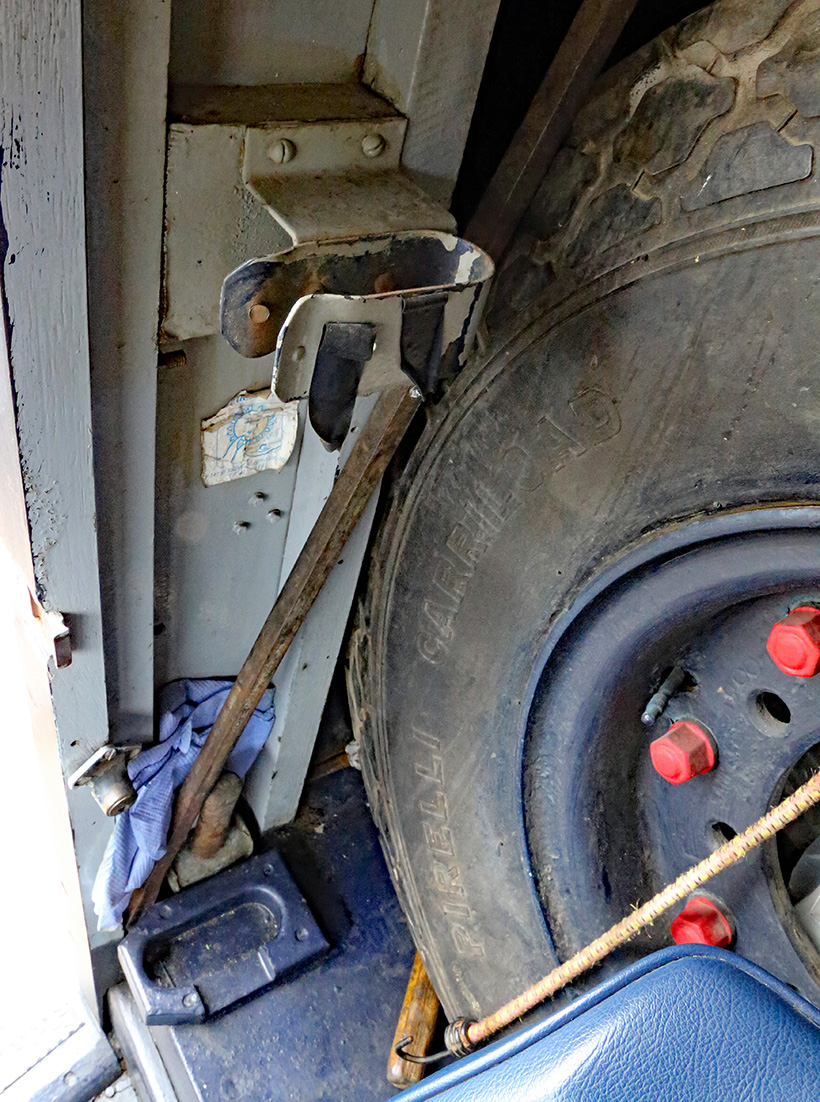
Mountings to hold a rifle are a reminder that, even though this Austin was built as a life-saver, it was still a military machine.
All the French adventures have been memorable. During the 1994 one, the ambulance was used as a backdrop by some Royal Marines dedicating a road to the commander of the 47th Royal Marines, at the point where they came ashore. Then, in 2019, it was one of 600 ex-WW2 military vehicles on the beach at Arromanches, at the exact moment that the D-Day invasions had began, 75 years previously.
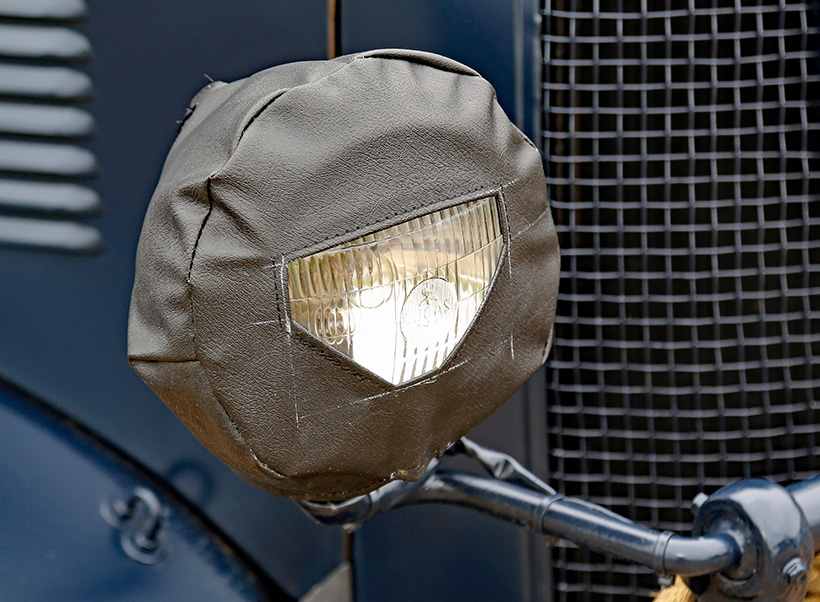
Chris has sourced period equipment over the years, such as blackout masks for the headlamps.
But there was one moment that Chris recalls as particularly special when, in 2014, some former serviceman stopped to have their pictures taken alongside the Austin. “One said ‘Thank you very much for what you’ve done.’ I responded that I’d done nothing. ‘No, you’ve preserved the vehicles,’ came the reply. All I could say to that was that it was the wrong way around – we’d only been able to preserve the vehicles because of the work those guys had done. We had the freedom to do that. It was the most extraordinary, lovely remark.”
Yo can subscribe to Classic & Vintage Commercials magazine simply by clicking here




